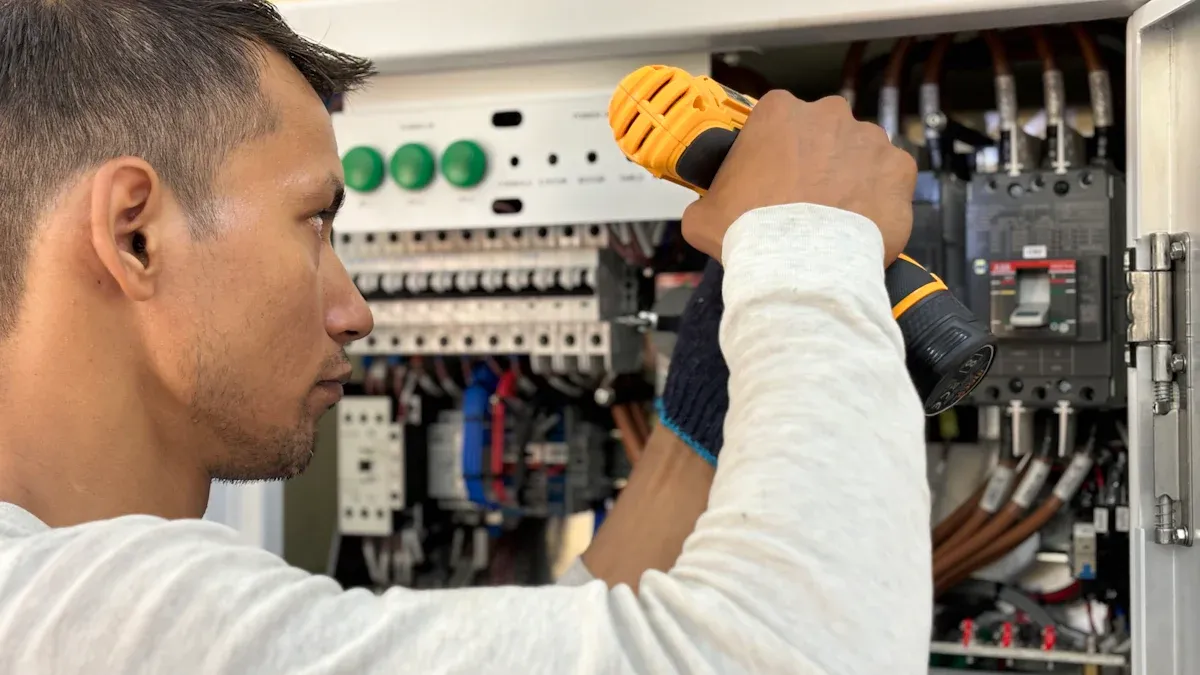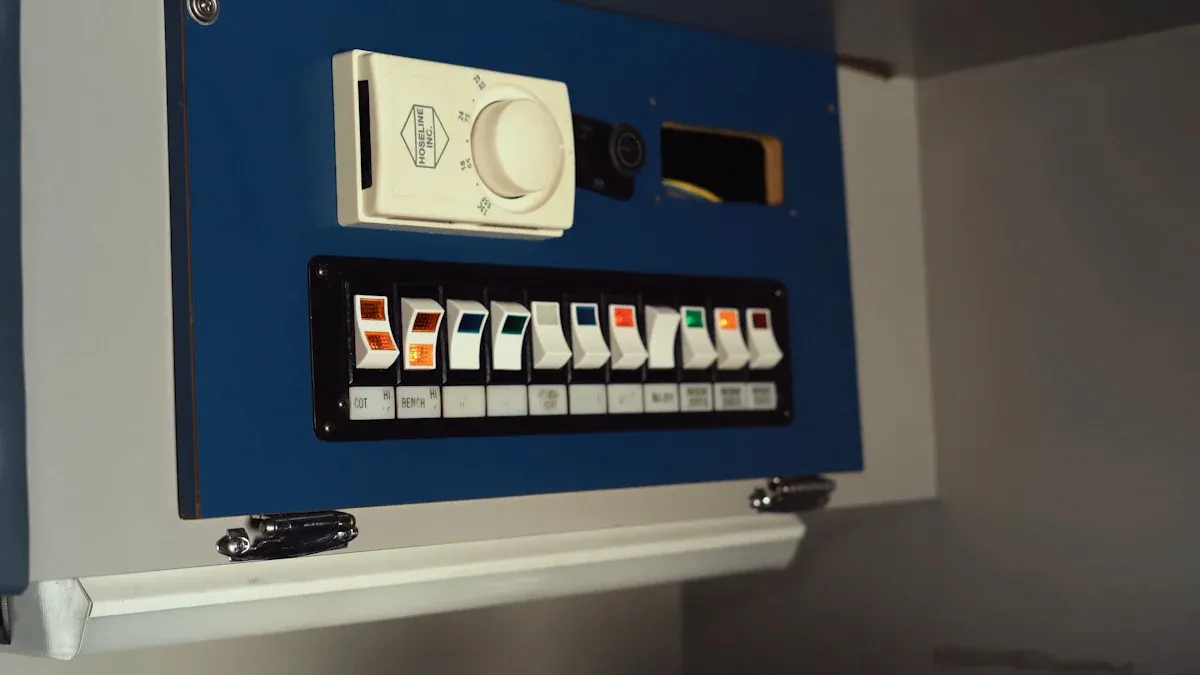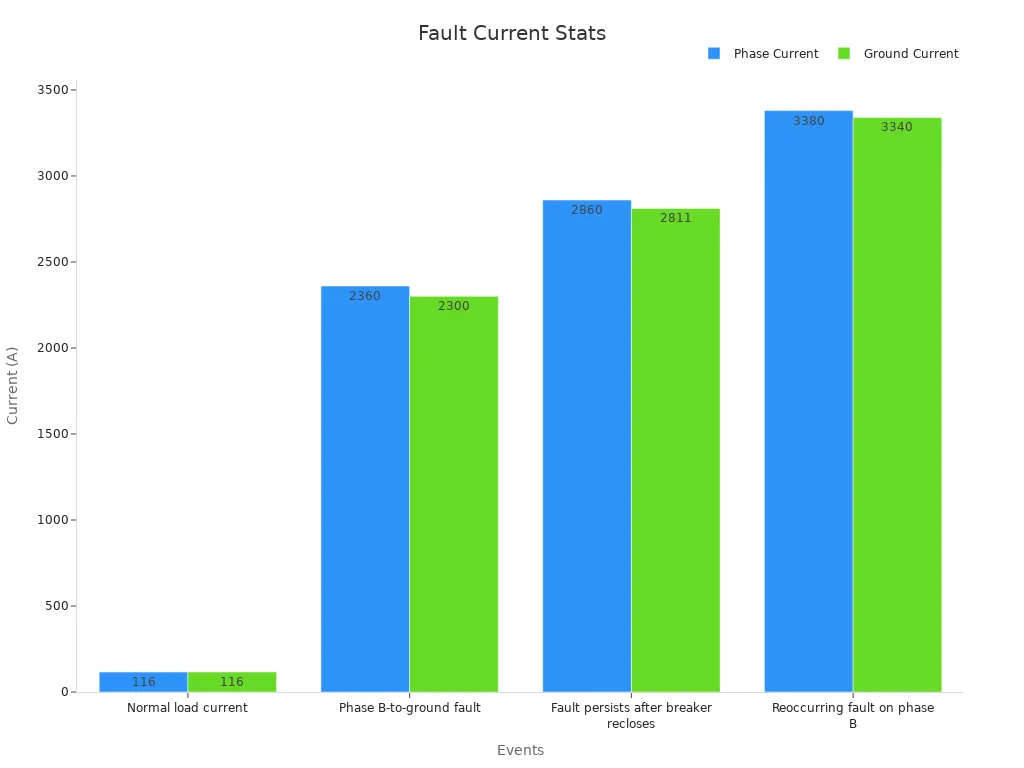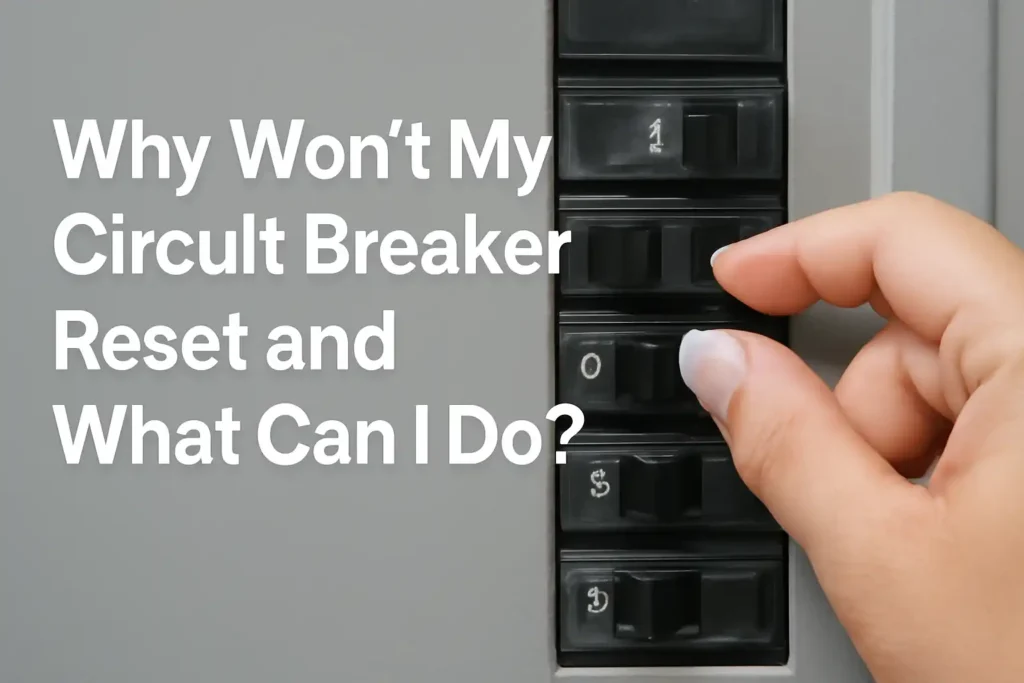When your circuit breaker does not reset, it can feel frustrating and even alarming. This issue often stems from common causes such as overloads, short circuits, ground faults, or a faulty breaker. For example, short circuits can generate extremely high currents that exceed the breaker’s interrupting capacity, preventing it from resetting. Ground faults can also trip breakers, signaling potential damage in wiring or connections. Overloads occur when the electrical load surpasses the breaker’s capacity, which is carefully calculated based on standards like the National Electrical Code (NEC). A breaker sized incorrectly may fail to protect your circuit properly.
Understanding these causes helps you troubleshoot safely and avoid risks. Always prioritize safety when working with electrical systems, and if the issue persists, don’t hesitate to call a professional.
Key Takeaways
- Circuit breakers often won’t reset due to overloads, short circuits, ground faults, or faulty breakers.
- Unplug all devices before resetting the breaker to avoid overload and protect your appliances.
- If the breaker trips immediately after resetting, look for warning signs like burning smells or sparks and call an electrician.
- Plug devices back in one at a time to find any appliance causing the breaker to trip.
- Always prioritize safety and call a licensed electrician if problems persist or you notice damage or burning odors.
Common Causes

Overload
You might wonder why your circuit breaker does not reset after it trips. Overload is one of the most common reasons. When you plug in too many devices or use several high-wattage appliances at once, the electrical demand can exceed what your circuit can safely handle. This causes the breaker to trip, protecting your home from overheating and fire hazards. Signs of overload include frequent tripping, buzzing noises, flickering lights, and burning smells. The National Fire Protection Association reports that electrical failures, including overloads, cause about 13% of all home fires. If you ignore these warning signs, you risk damaging your devices and increasing the chance of a fire. Older breakers may not trip as they should, which makes overload even more dangerous.
Tip: If you notice your breaker trips often when you use certain appliances together, try running them one at a time.
Short Circuit
A short circuit happens when a hot wire touches a neutral or ground wire. This creates a path for electricity to flow with little resistance, causing a sudden surge of current. Your breaker trips instantly to stop this dangerous flow. Technical studies show that modern breakers can interrupt short-circuit currents very quickly, sometimes in less than two milliseconds. This fast action helps prevent damage to your electrical system and keeps you safe. If your circuit breaker does not reset and trips immediately, a short circuit could be the reason.
- Short circuits can cause:
- Immediate breaker trips
- Arcing or sparks
- Damage to wiring or outlets
Ground Fault
A ground fault occurs when electricity escapes its intended path and flows directly to the ground. This often happens if a wire becomes loose or damaged. Ground faults are especially dangerous in areas with water, like kitchens or bathrooms. Your breaker will trip to prevent electric shock. If you see water near outlets or feel tingling when touching appliances, you might have a ground fault.
Faulty Breaker
Sometimes, the problem is not with your wiring or devices but with the breaker itself. If your circuit breaker does not reset, even after you unplug everything, the breaker may have an internal failure. Signs of a faulty breaker include a handle that feels loose or unstable, visible damage, or the breaker refusing to stay on even with no load. Electrical safety standards recognize that these symptoms often mean the breaker’s internal parts have failed. In this case, you should replace the breaker to restore safety.
Circuit Breaker Does Not Reset

When you find that your circuit breaker does not reset, you may feel confused or worried. Understanding why this happens helps you solve the problem safely and quickly. Most often, the issue comes from an overload, a short circuit, a ground fault, or a faulty appliance. You can follow a clear process to find the cause and fix it.
Unplug Devices
Start by unplugging all devices and appliances from the outlets on the affected circuit. This step removes the chance of overload and protects your devices from damage. Many times, a circuit breaker does not reset because too many items draw power at once. By unplugging everything, you create a safe environment for troubleshooting.
Tip: Always check that your hands are dry and you stand on a dry surface before touching the breaker panel. Safety comes first.
Reset Procedure
After you unplug all devices, you can try to reset the breaker. Use this step-by-step guide:
- Find your circuit breaker panel. You usually see it in the basement, garage, or utility closet.
- Look for the breaker that sits in the middle position or points the opposite way from the others. This is the tripped breaker.
- Flip the breaker switch fully to the “off” position. Wait a few seconds to let it cool.
- Push the switch back to the “on” position. Listen for a click and watch if it stays in place.
- If the circuit breaker does not reset and trips again right away, you may have a deeper problem.
- Make sure you do not use any metallic tools or touch bare wires.
- If the breaker stays on, plug your devices back in one at a time. Turn each device on to see if one causes the breaker to trip again. This method helps you find a faulty appliance or a device that draws too much power.
Note: Waiting a few seconds before resetting helps the breaker cool down and reduces the risk of another trip.
Check for Immediate Trip
If your circuit breaker does not reset and trips immediately after you flip it on, you likely face a short circuit or ground fault. These problems cause a sudden surge of electricity, which the breaker detects and interrupts to keep you safe. You should look for warning signs:
- Burning smells near outlets or the breaker panel
- Discoloration or scorch marks on outlets
- Flickering or dimming lights when you try to reset the breaker
- Buzzing or crackling sounds
These signs mean you have a serious electrical problem. Immediate tripping protects your home from fire and electrical shock. The following table shows how quickly a breaker reacts to faults:
| Event Description | Fault Current (A) | Trip Timing | Additional Notes |
|---|---|---|---|
| Normal load current | 116 | N/A | Baseline current before fault |
| Phase B-to-ground fault | 2360 (Phase), 2300 (Ground) | Immediate trip at 12:44:38.413 | Breaker interrupts current after 3 cycles |
| Fault persists after breaker recloses | 2860 (Phase), 2811 (Ground) | Trip at 12:44:38.893+ | Time-overcurrent elements act after initial trip |
| Reoccurring fault on phase B | 3380 (Phase), 3340 (Ground) | Immediate trip at 12:59:41.526 | Breaker recloses, fault persists |

If you notice any of these warning signs, do not try to reset the breaker again. You should call a licensed electrician right away. Trying to force a breaker to stay on can cause more damage or even start a fire.
Alert: Repeated immediate trips mean you have a dangerous electrical fault. Only a professional should handle these repairs.
If your circuit breaker does not reset but does not trip right away, plug your devices back in one at a time. Watch for the breaker to trip as you add each device. When the breaker trips after plugging in a certain appliance, you have found the source of the overload or fault. Remove that device and test the circuit again.
By following these steps, you can find out why your circuit breaker does not reset and take action to keep your home safe.
When to Call an Electrician
Persistent Issues
You may wonder why some electrical problems keep coming back, even after you try all the basic steps. When a circuit breaker does not reset after you unplug devices and follow the reset procedure, you face a persistent issue. These problems often need special tools and expert knowledge to solve.
- Electricians use advanced methods like infrared inspection and real-time circuit monitoring to find hidden faults.
- Certified professionals have special training and follow safety codes, which helps prevent accidents and keeps your home safe.
- Only a licensed electrician can perform a full power system check to spot dangers and stop future outages.
Tip: If your breaker keeps tripping or you see confusing signals from modern breakers, call a professional. Trying to fix these problems yourself can lead to bigger risks.
Signs of Danger
You should know why certain warning signs mean you need expert help right away. Some electrical hazards are too dangerous for you to handle alone. Look for these signs:
- The circuit breaker does not reset after you try all troubleshooting steps.
- You see sparks, burn marks, or melted parts near outlets or the breaker panel.
- You smell burning or notice discolored outlets.
- Your home has old wiring, such as knob-and-tube or aluminum wires.
- You find damaged insulation, exposed wires, or signs of rodent damage.
- Water leaks or wet areas near electrical panels increase shock risk.
These problems can cause fires, shocks, or even serious injuries. Electrical accidents may lead to burns, nerve damage, or long-term health issues. Only a qualified electrician can fix these hazards safely and make sure your system meets safety standards.
⚠️ Alert: Never ignore burning smells, visible damage, or repeated breaker trips. These are clear signs you need a professional.
Trying to repair electrical faults without the right skills can break safety codes and put your family at risk. Electricians know how to replace faulty breakers, match parts, and test the system after repairs. They also follow strict rules to protect everyone in your home.
You now know why your circuit breaker may not reset. Common causes include overload, short circuits, ground faults, or a faulty breaker. To troubleshoot, you should:
- Unplug all devices
- Reset the breaker
- Check for warning signs
Never force a breaker to stay on. Your safety comes first. If the problem continues or you notice burning smells or damage, call a licensed electrician right away.
FAQ
Why does my breaker keep tripping even after I unplug everything?
You may have a wiring problem or a faulty breaker. Sometimes, hidden damage or a short circuit causes repeated trips. You should call an electrician if the breaker trips with nothing plugged in.
Tip: Never ignore repeated trips. This can signal a serious electrical issue.
Why should I not force a breaker to reset?
Forcing a breaker can damage your electrical system. You risk fire or electric shock. The breaker trips to protect you. Always fix the cause before trying to reset.
Why do some rooms lose power but others do not?
Each breaker controls a different circuit. If one trips, only the outlets and lights on that circuit lose power. Other rooms stay on because they use separate breakers.
Why do I smell something burning near my breaker panel?
A burning smell means overheating or damaged wires. This can start a fire. You should turn off the main power and call an electrician right away.
- Burning smells are always a warning sign.
- Do not try to fix this yourself.
Why do I need a professional for electrical problems?
Electricians have training and tools to find hidden faults. You may miss dangers if you try to fix things yourself. Professionals keep your home safe and follow safety codes.
⚡ Alert: Electrical repairs without training can cause injury or fire.
The following information may be of interest to you
What is the difference between a circuit breaker and a fuse?
How to determine if your solar inverter is functioning correctly
How to test a circuit breaker with a multimeter
What Are the Signs of a Bad Circuit Breaker



